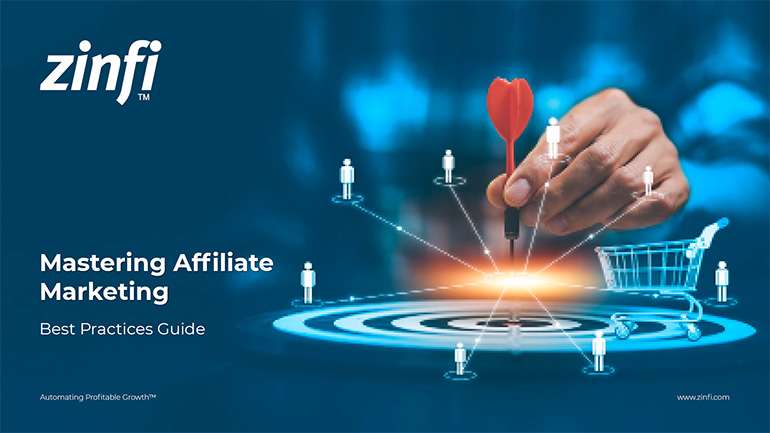Best Practices Articles

5 Reasons Why Multi-Partner Marketing Programs Fail
Large vendors selling through a complex channel with many channel partners tend to invest substantially in multi-partner marketing. They can end up spending millions of dollars locally and globally in developing campaigns, investing in channel marketing automation tools and providing concierge services. However, most of these partner marketing programs tend to fail for a few specific reasons. In this article, we will focus on what makes these programs fail and what can be done to dramatically improve the probability of success.
Before we delve into tactics associated with multi-partner marketing, let’s look at the appropriate objectives of such programs. There are three primary types of objectives associated with multi-partner marketing programs:
- Partner-led - The objective of these programs focusses on enabling a set of partners to drive demand of existing or new products that a vendor sells through the channel to end users. In these types of programs, the vendor puts together campaigns, provides multi-partner marketing automation tools and, in some cases, allocates partner marketing concierge resources to help partners generate demand and build sales pipeline. The primary measure of success in these programs is marketing ROI generated in excess of 20X the original investment.
- Vendor-led - The objective of these programs is to generate leads directly from the end-user base, but then use a lead management program to distribute leads to various partners who are best-positioned to nurture, develop and qualify these leads to build sales pipeline. In this case, the vendor essentially provides a lead distribution and management platform, as well as some concierge support, to help the partner build pipeline based on the leads provided by the vendor. Again, the primary measure of success is marketing ROI generated in excess of 20X the original investment.
- Jointly led – These are co-marketing programs where the vendor works with a specific partner to generate leads by running events, campaigns and other initiatives to co-develop, qualify and close together. We tend to see these types of campaigns in high-end enterprise segments, and the campaigns tend to be long-term and geared towards a much higher average selling price for complex solutions. These are pretty typical in technology-centric solution sales. The primary measure of success for these programs is actually sales generated from such activities.
Now let’s turn our focus to the first type of program identified above—the partner-led model—where partners are being enabled and they are the ones driving pipeline development. Typically, mistakes are made when a vendor is setting up and rolling out these campaigns. Here are the main pitfalls, along with suggestions for what can be done to avoid them:
- Campaign selection – Campaigns that work for the direct marketing team do not necessarily work for partner marketing organizations. We have discussed this in other articles. The best way to succeed in a partner marketing campaign is to pick tactics that work over a short period of time—i.e., not exceeding 30-60-day campaign cycles—and deploy tactics that are repeatable. Common examples of these are search, social, microsite, email and event campaigns, which are based on one or two touches. Multi-touch campaigns tend to fail with most multi-partner marketing campaigns, simply because partners are busy and cannot stay focused on a specific vendor campaign or program for a long period of time. Yes, there are always a few partners who can successfully run a multi-touch campaign over multiple months, but those are exceptions to the rule. Success in the channel is about scaling simple motions rapidly from one region to another, so selection of campaigns is critical.
- Concierge support – No matter how simple the campaigns are, partners still need marketing concierge support. Setting up a structured concierge program that is scalable and repeatable is very difficult for most vendors. As a result, most vendors do not put a lot of effort and thought into it, and just roll out a set of campaigns and campaign tools. Lack of partner adoption plagues such programs. The best way to avoid this is to set up concierge resources focused on 50–100 partners per language per quarter, and drive quarterly campaigns and results in a highly structured way. There are organizations like ZINFI who do this for a living, and a vendor will almost always save time and money by outsourcing their concierge activities to a professional organization. The ROI from such programs always outweighs the required incremental investment. Most importantly, though, is that partner satisfaction and confidence go up rapidly in partner-led demand generation programs that are backed by solid concierge support.
- Partner selection – If campaign selection and concierge support are set up right, the last step in creating a successful multi-partner marketing program is to select a set of partners to participate. While a vendor may have hundreds or thousands or partners in a region, it is essential to take a thoughtful approach to selecting the right partners. It is tempting to pull a random list together and go out and provide campaigns, tools and concierge support, but in most cases those efforts are wasted and do not provide the necessary return. I will discuss shortly how to select partners, but before we do that, I do want to emphasize the crucial importance of this step. In most cases, it takes a vendor at least three to four months to put together a campaign, get regional alignment, and get internal resources trained and ready to roll out such a program. However, if the vendor hasn’t properly planned partner selection, then not only are all of these efforts likely to fail, but the program may never get another chance because it will be perceived within the organization as a completely failed effort. So, from an organizational dynamics perspective, it is essential to win consistently from day one with a multi-partner program roll-out to build confidence within the organization and demonstrate that the program can add value and build real pipeline.
With this as a context, let’s take a closer look at partner selection for a multi-partner marketing effort. While it is not hard to do this right, vendors typically fail to spend enough time thinking this step through properly. Here are five key considerations that a vendor should consider and act on when trying to roll out a partner-led marketing effort to ensure a successful launch.
- Strategy – Partners selected to participate need to be strategic to the vendor—i.e., the program’s success must be important to both the vendor and the partner. This only happens when the partner has a vested interest in the relationship, based on the volume of revenue they already generate using vendor, and the partner must have the potential to grow revenues substantially.
- Competence – The partner organization should not require product training to go market and sell, so after the marketing campaign is over their sales and technical people will be able to engage with the leads generated and develop them to build pipeline and closure.
- Single Point of Contact (POC) – The partner organization needs to provide a single point of contact (POC) who can properly navigate internally through the sales team to make sure leads are being followed through and appropriate scripts, sales tools, etc., are being made available to the reps to ensure continuity from marketing campaign to sales closure.
- Weekly review – There should be a weekly joint review between the concierge service (e.g., ZINFI) and the partner organization, and it would be great if the vendor team could participate as well. If vendor team members cannot join, then concierge service and the POC on the partner side should facilitate the meeting, take notes and share discussion points with the appropriate vendor team member.
- Performance feedback – The partner organization should be willing to share detailed performance feedback from marketing metrics (email, event, etc.) to sales metrics (marketing qualified leads, sales qualified leads, deal value, pipeline value, closing values, etc.). Metrics should be clearly defined prior to campaign launch so expectations are clear.
As you can tell from this article, proper planning, selection and focus are the overarching themes for success. There is no magic in successfully managing a multi-partner marketing program, but it does require deliberate and structured effort. If a channel marketing organization follows the path I have laid out above in a logical and sequential order, then success and ROI attainment can be achieved in just about any partner-led multi-partner marketing program.
For more information, please check this article.
Best Practices Guidebook
 Winning with Partner Advisory Councils: Best Practices for Partner Engagement & Growth
Winning with Partner Advisory Councils: Best Practices for Partner Engagement & GrowthDownload Guide
 The Future of Partner Ecosystems Best Practices
The Future of Partner Ecosystems Best PracticesDownload Guide
 The AI Revolution: How Technology and Talent are Shaping the Future
The AI Revolution: How Technology and Talent are Shaping the FutureDownload Guide
 Top 105 Partner Management Metrics that Matter Best Practices
Top 105 Partner Management Metrics that Matter Best PracticesDownload Guide
 Mastering PRM Integration Best Practices
Mastering PRM Integration Best PracticesDownload Guide
 Building a Sales Partner Portal with Salesforce Best Practices
Building a Sales Partner Portal with Salesforce Best PracticesDownload Guide
 Building and Managing Partner Ecosystems Best Practices
Building and Managing Partner Ecosystems Best PracticesDownload Guide
 Mastering Co-Marketing and Co-Selling Best Practices
Mastering Co-Marketing and Co-Selling Best PracticesDownload Guide
 Transforming Partner Ecosystems Best Practices
Transforming Partner Ecosystems Best PracticesDownload Guide
 Mastering Partner Ecosystems Best Practices
Mastering Partner Ecosystems Best PracticesDownload Guide
 Mastering Partner Onboarding Best Practices
Mastering Partner Onboarding Best PracticesDownload Guide
 Partner Ecosystem Management Best Practices
Partner Ecosystem Management Best PracticesDownload Guide
 B2B Marketing in the Age of Intelligence Best Practices
B2B Marketing in the Age of Intelligence Best PracticesDownload Guide
 Multi-Partner Co-Selling Best Practices
Multi-Partner Co-Selling Best PracticesDownload Guide
 A Guide to Enhance Channel Sales Efficiency
A Guide to Enhance Channel Sales EfficiencyDownload Guide
 Mastering Affiliate Marketing Best Practices
Mastering Affiliate Marketing Best PracticesDownload Guide
 The Ultimate Guide to Channel Partner Management
The Ultimate Guide to Channel Partner ManagementDownload Guide
 Top 10 Trends in 2024 Partner Relationship Management
Top 10 Trends in 2024 Partner Relationship ManagementDownload Guide







